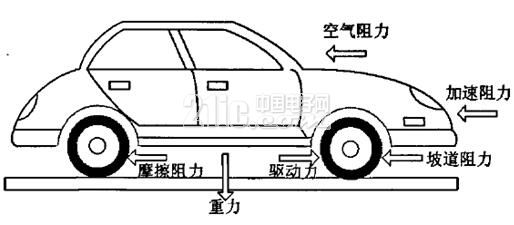In recent years, with the increasingly serious problems of environmental degradation and energy shortage, “new energy vehicles†have become the focus of industry attention and government support. Many undergraduate and higher vocational colleges have also added research directions and related majors of “new energy vehiclesâ€. Today, let us look at how to simulate the operating conditions by adjusting the speed and torque in the actual teaching.
This article refers to the address: http://
The teaching of new energy vehicles in colleges and universities is a practical and highly applicable course. Whether it is to train undergraduate teaching of development design and scientific research talents, or to train higher vocational colleges that focus on practical operational skills, it is necessary to understand new energy vehicles. In the real environment, various complicated working conditions are limited by the experimental teaching venues. Students often cannot experience the real experience during the learning period. Today, let us look at how to simulate the working conditions in a limited environment by adjusting the speed and torque.
First, what is the speed and torque
Torque is an important parameter of engine performance. It refers to the average torque output from the crankshaft when the engine is running. It is commonly known as the “turning force†of the engine. The greater the torque, the greater the "power" of the engine output, the faster the crankshaft speed changes, and the better the climbing ability, starting speed and acceleration of the car. The torque varies with the engine speed. The speed is too high or too low, the torque is not the maximum, and the maximum torque is only available at a certain speed or a certain speed range. This interval is given when the maximum torque is marked. Speed ​​or speed range. The maximum torque generally occurs in the middle and low speed range of the engine. As the speed increases, the torque will decrease.
Second, why adjust the speed and torque to simulate the working conditions
When driving in different road conditions, the car will respond to different speeds and torques. In the conventional research of new energy vehicles, most of us solve the motor's speed and torque value through the actual collected speed conditions. Enter the speed and torque of the motor to simulate the operating conditions of the new energy electric vehicle.
So what is the calculation method?
First of all, according to the internal structure of the electric car, we can know the formula of the motor speed and the speed of the car:
Car speed and motor speed conversion:

Motor speed and car speed conversion:

(where V is the car speed, N is the motor speed, I is the gear ratio (>1), and R is the wheel radius)
The overall force analysis of the electric vehicle during driving is as follows:

According to the force analysis, we can derive the electric vehicle driving force formula, driving resistance formula, friction resistance formula, ramp resistance formula and acceleration resistance formula, and then get the dynamic motion differential equation of electric vehicle:

According to this principle, we can adjust the actual load acting on the output shaft of the motor when the car is running by adjusting the speed and torque, and reproduce the driving process such as starting, shifting, braking, etc., to achieve the same road test or more ideal motor operation. Simulation
Third, how to operate the specific teaching experiment steps?
For example, if the car is downhill or braked, we can adjust the speed and torque according to the following table:
Serial number 12345678
Speed ​​(r/min)20050075010001250150017502000
Torque (Nm)) 100100100100100100100100
In the speed control mode, the load motor is slowly increased from 0 to a given speed of 0-200r/min. After the speed is stabilized, in the torque mode, the given torque is slowly increased from 0 to 1-100Nm, and then the speed is increased one by one:
1: Continue to increase the speed to 500r/min
2: Continue to increase the speed to 750r/min
3: Continue to increase the speed to 1000r/min
4: Continue to increase the speed to 1250r/min
5: Continue to increase the speed to 1500r/min
6: Continue to increase the speed to 1750r/min
7: Continue to increase the speed to 2000r/min
Alternatively, the torque can be adjusted to 200 Nm, 300 Nm, 400 Nm, etc., and the experimental method is the same.
In addition, students can achieve more accurate test performance by configuring more intensive test points for more detailed motor performance and parameters. Or configure some special test parameters, such as torque mode, torque set to 0, you can test the parameters of the motor under test under no-load conditions.
In summary, it is the basic method for simulating teaching experiments by adjusting the speed and torque. For more information on the simulation method of working conditions, please refer to Zhiyuan Electronics “New Energy Vehicle Teaching Platformâ€, which integrates international leading CAN bus analysis unit, in addition to various types of simulation conditions, can also carry out motor loading, no-load, BMS charging efficiency, regenerative energy feedback analysis experiments and various CAN bus communication experiments, can be used for new energy electric vehicle core communication The network conducts comprehensive testing and analysis, and implements functions such as error location, bus load optimization, and system error simulation.
Small Spray Water Atomization,Small Spray Water Atomization Filter Mesh,Small Spray Filter Mesh
SHAOXING HUALI ELECTRONICS CO., LTD. , https://www.cnsxhuali.com